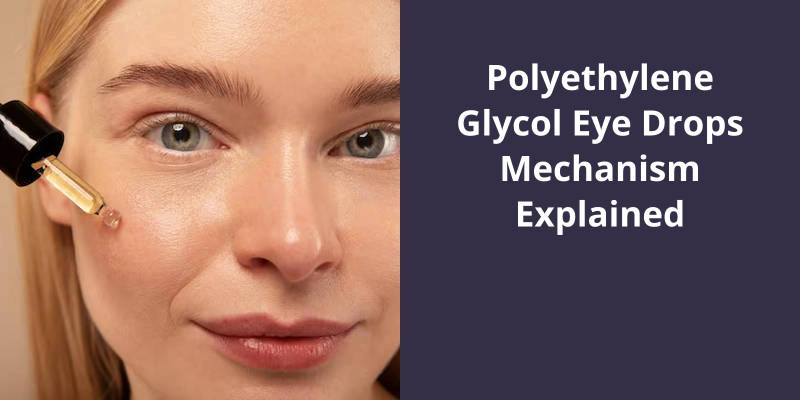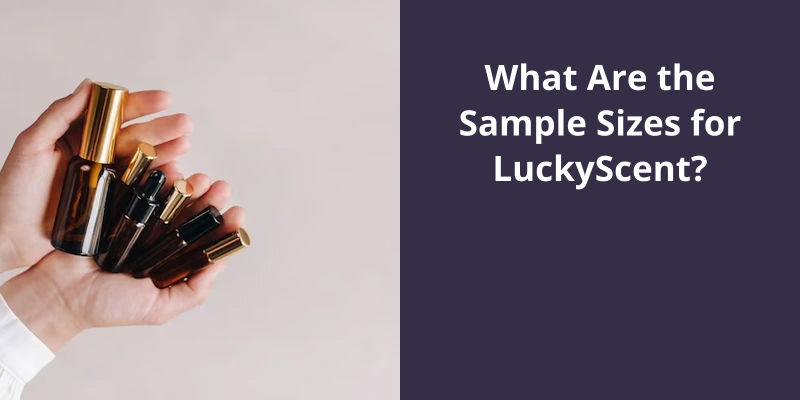Polyethylene Glycol eye drops work by acting as lubricants for the eye. When these drops are applied to the eye’s surface, they form a smooth, transparent layer that mimics natural tears. This layer helps to keep the eye moist and protected from dirt and other irritants. The Polyethylene Glycol in the eye drops is known to attract and retain water, further enhancing the eye’s moisture levels. By maintaining a wet surface on the eye, these drops help lessen the friction when the lids blink over the eye, thus reducing feelings of dryness, irritation, and discomfort typical of conditions like dry eye syndrome. In simple words, Polyethylene Glycol eye drops make your eyes feel less dry by providing and keeping moisture on the eye’s surface similar to natural tears.

What Does Propylene Glycol Do for Eyes?
Polyethylene glycol 400/propylene glycol eye drops are commonly used for the temporary relief of irritation and burning that can result from dry eyes. These eye drops function by lubricating the eyes, providing a soothing and moisturizing effect. While they offer immediate relief, it’s important to note that they don’t address the root cause of dry eye.
By moisturizing the eyes, these eye drops can alleviate symptoms such as dryness, irritation, and burning. Dry eye can result from various factors, including environmental conditions, age, hormonal changes, certain medications, or underlying health conditions. To effectively address dry eye, it’s important to identify and manage the underlying cause.
They can be a valuable tool for individuals experiencing acute dryness or as a supplementary treatment alongside other dry eye management strategies. However, it’s always advisable to consult with an eye care professional to determine the most appropriate treatment plan for your specific situation.
Additionally, it’s worth mentioning that these eye drops may not be suitable for everyone and can potentially cause adverse effects in some individuals. Therefore, it’s essential to carefully read the instructions and follow the recommended dosage. If symptoms persist or worsen, it’s important to seek medical attention to explore alternative treatment options or potential underlying causes.
How to Properly Apply Eye Drops for Maximum Effectiveness
- Gently wash your hands with soap and water.
- Tilt your head back slightly and look up at the ceiling.
- Use your index finger to gently pull down your lower eyelid.
- Hold the eye drop bottle with your other hand, pointing the dropper towards your eye.
- Squeeze the bottle to release one drop into your eye, aiming for the lower eyelid.
- Close your eye gently, without squeezing it, and keep it closed for a few minutes.
- Wipe away any excess liquid with a clean tissue.
- Repeat these steps for your other eye if required.
- Make sure to follow any specific instructions given by your eye doctor or pharmacist.
Polyethylene glycol (PEG), a versatile compound often utilized in the medical, chemical, and industrial fields, is classified as a biocompatible, synthetic, hydrophilic polyether chemical. It’s structure, commonly represented as H−(O−CH 2 −CH 2 ) n −OH, allows for numerous applications in various sectors.
What Kind of Chemical Is Polyethylene Glycol?
Polyethylene glycol is created by the polymerization of ethylene oxide, resulting in a chain of repeating ethylene oxide units. The number of repeating units, denoted by “n,” can vary, leading to different molecular weights and properties of the compound. PEG is typically a clear, viscous liquid or solid, depending on it’s molecular weight.
One of the main applications of polyethylene glycol is as a base for various eye drop formulations. These eye drops are commonly used to alleviate dryness and discomfort in individuals with dry eyes.
The properties of PEG also reduce the risk of adverse reactions and sensitivities, making it a safe and widely-used component in eye care formulations.
The Safety and Toxicity Profile of Polyethylene Glycol and It’s Potential Side Effects.
- Polyethylene glycol (PEG) is a widely used substance.
- It’s generally safe for use and has a low toxicity profile.
- PEG is commonly used in medicine, personal care products, and food additives.
- However, some individuals may experience side effects when exposed to PEG.
- Allergic reactions, such as skin rashes and itching, have been reported.
- In rare cases, severe allergic reactions can occur, leading to difficulty breathing and swelling of the face, tongue, or throat.
- PEG may also cause gastrointestinal side effects, including nausea, vomiting, and diarrhea.
- Patients with a history of bowel obstruction or perforation should use PEG with caution.
- There have been reports of PEG-induced kidney injury, although these cases are rare.
- It’s important to consult a healthcare professional if you’ve any concerns or experience adverse reactions to PEG.
Polyethylene glycol, commonly used as an osmotic laxative, exerts it’s chemical action by effectively increasing water retention within the colon. This is achieved by it’s ability to bind to water molecules, resulting in the production of loose stools. The mechanism of polyethylene glycol aids in facilitating bowel movements and relieving constipation.
What Is the Chemical Action of Polyethylene Glycol?
Polyethylene glycol, also known as PEG, is a chemical compound that plays a crucial role as an osmotic laxative. It’s mechanism of action involves increasing water retention in the lumen of the colon by binding to water molecules. This binding leads to the production of loose stools, which helps to alleviate constipation and facilitate bowel movements.
When polyethylene glycol is ingested, it undergoes minimal absorption in the gastrointestinal tract. Instead, it remains within the lumen of the colon. Due to it’s high molecular weight, polyethylene glycol has limited permeability across the intestinal epithelium. As a result, most of it stays within the colon, exerting it’s osmotic effects.
The osmotic activity of polyethylene glycol arises from it’s ability to bind with water molecules. This binding occurs through hydrogen bonding, which enables polyethylene glycol to retain water in the colon. By increasing the water content in the lumen, the stool becomes softened and easier to pass.
It prevents excessive water absorption by creating an osmotic gradient that prevents water from being reabsorbed into the body. This mechanism ensures that the stool remains moist and eliminates the dryness commonly associated with constipation.
The effectiveness of polyethylene glycol as a laxative is predominantly attributed to it’s ability to increase water retention in the colon. This provides relief from constipation by promoting regular bowel movements. Moreover, it’s osmotic action doesn’t interfere with electrolyte balance or cause dependence, making it a safe and effective choice for addressing constipation.
Benefits and Uses of Polyethylene Glycol in the Medical Field
Polyethylene glycol (PEG) is a versatile compound widely used in the medical field due to it’s beneficial properties. It’s a high molecular weight and is water-soluble, making it an effective lubricating agent and emollient.
In ophthalmology, PEG is commonly used in the form of eye drops to relieve dryness and discomfort caused by various eye conditions, such as dry eye syndrome. These eye drops work by moistening and lubricating the surface of the eye, providing quick relief from irritation and improving overall comfort.
PEG also has the ability to enhance the penetration and absorption of certain medications. In ocular drug delivery, it’s used as a carrier or solubilizing agent to improve the effectiveness and bioavailability of drugs targeted to the eye.
Moreover, PEG is widely utilized in medical formulations for it’s stability, non-toxicity, and compatibility with other substances. It’s used in the production of various pharmaceuticals, including tablets, ointments, and suppositories.
Overall, polyethylene glycol plays a crucial role in the medical field, particularly in ophthalmology, by providing lubrication, enhancing drug delivery, and ensuring the safety and efficacy of various medical formulations.
Source: Polyethylene glycol
Conclusion
PEG acts as a protective coating on the eye, providing sustained lubrication and soothing effects. It’s ability to interact with substances like propylene glycol further enhances it’s surfactant action, ensuring long-lasting relief for individuals experiencing dry, irritated eyes.





